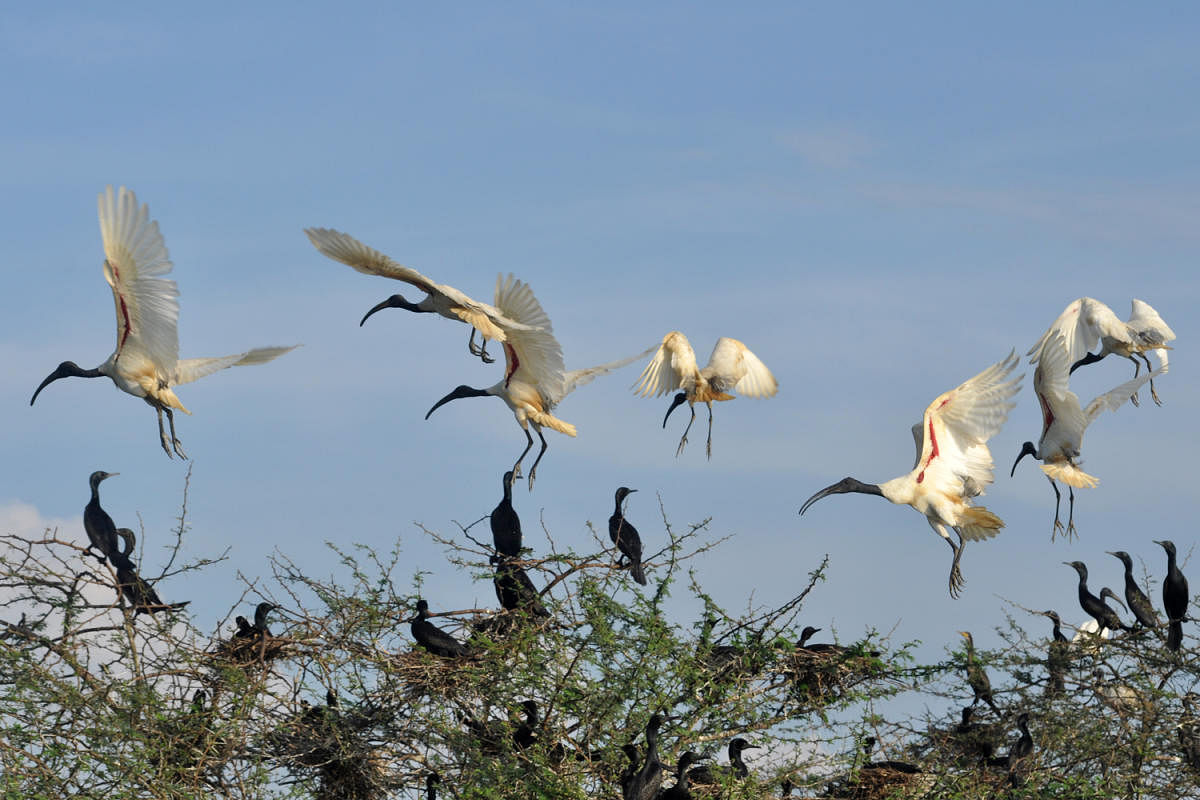This reservoir is a haven for birds



Come winter, thousands of winged beauties from far and wide visit the quiet and serene Attiveri Bird Sanctuary located in Mundgod taluk of Uttara Kannada. Over 40 varieties of migratory as well as local birds come here for breeding and nesting every year.
Between October to March, one can see black-headed ibis, northern pintails, spoonbills, purple moorhen, black-winged stilt, Malabar grey hornbill, garganey and many more birds. Several other birds like spot-billed ducks, lesser whistling ducks, Indian and little cormorants, egrets are found here throughout the year.
“The sanctuary attracts anywhere between 4,000 to 5,000 birds in a year. What is special about this sanctuary is that with the onset of winter, one can see different species of birds at the same time,” says Sanjeev S Padeppanavar, the Deputy Range Forest Officer of Attiveri Bird Sanctuary.
This sanctuary consists of a reservoir spanning an area of 100 hectares. With the increase in monsoon rains, the brimming reservoir has been attracting a greater number of birds for the past two years.
Interestingly, it was this reservoir built by the irrigation department in the midst of forests of Mundgod range in 1992, which started attracting birds in large numbers. The partially submerged trees offered an ideal spot for the birds to lay their eggs, safe from other predators.
Over the years, as migratory birds from as far as Central Asia and Central Europe too started flocking here, the reservoir and its surrounding forest area were declared as a sanctuary in 2000. The government further banned fishing activities in the reservoir to protect and conserve these birds.
While the birds take refuge in the reservoir for breeding activities, the moist deciduous forests and the surrounding agricultural lands serve as their feeding grounds.
The villagers too have taken measures to ensure these birds have a good stay.
“We mainly grow maize and the birds often visit the fields to feed on the crops. We, however, do not disturb the birds and have in fact planted more trees for the birds to sit and build their nests,” says Hanumantha K, a villager.
Also, the forest department has created around 40 artificial islands in the reservoir for the birds to lay their eggs.
“Most of these islands have been mainly planted with babul trees (Acacia arabica), which are ideal for building nests for laying eggs. Some islands have been left barren as some species lay their eggs on the ground,” says Sanjeev.
Apart from the colourful birds, the forest also is home to several wild animals such as spotted deer, wild boar, tiger, leopards among others.
Deccan Herald is on WhatsApp Channels| Join now for Breaking News & Editor's Picks